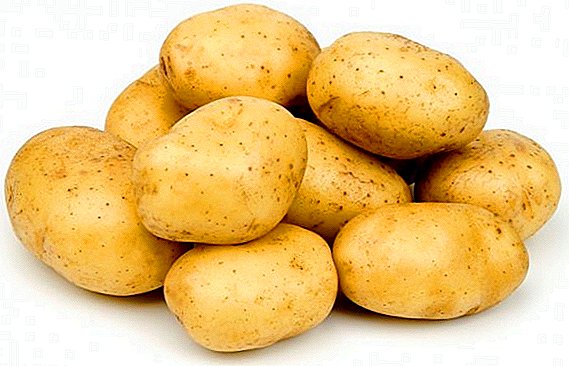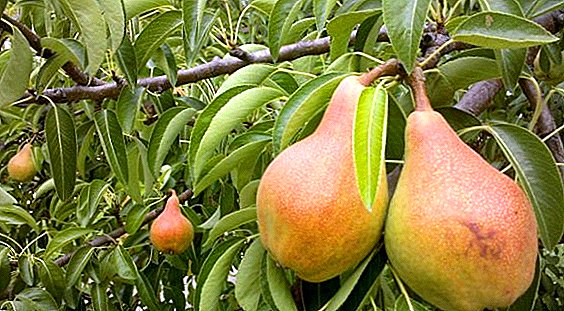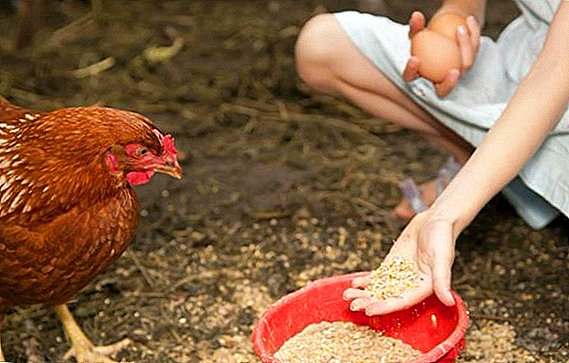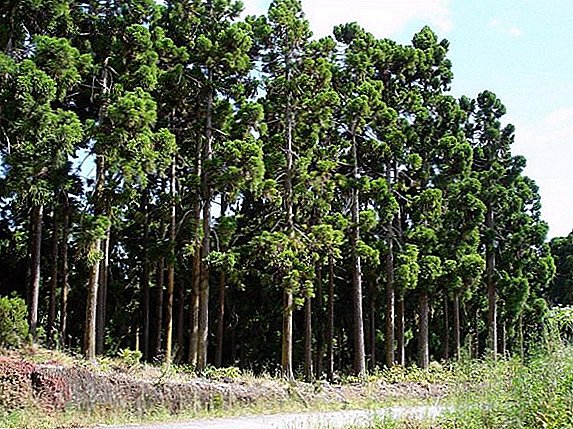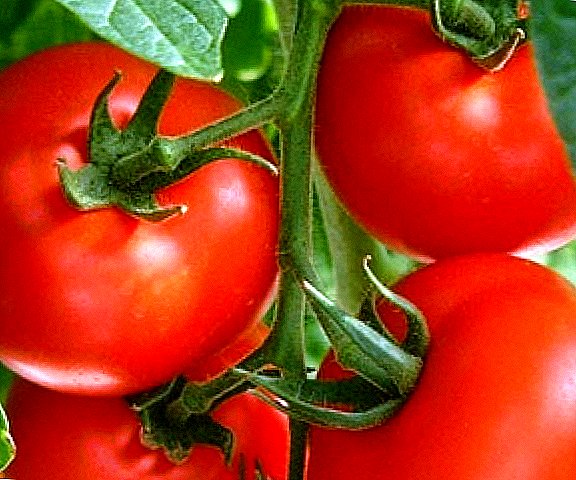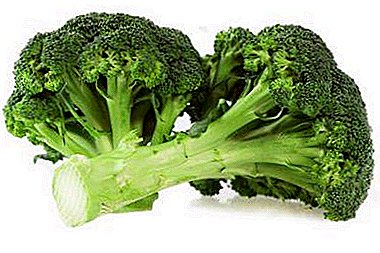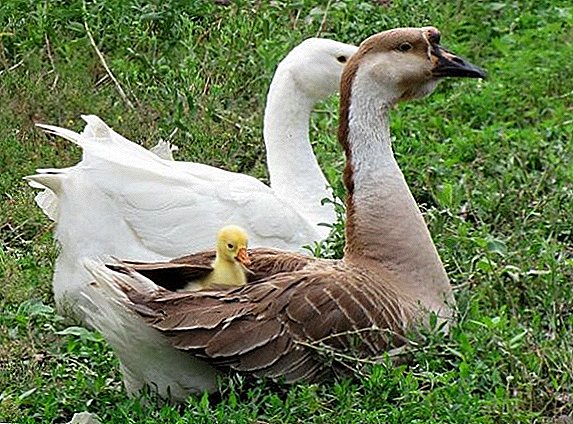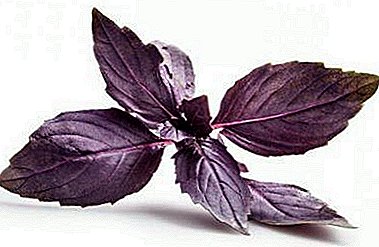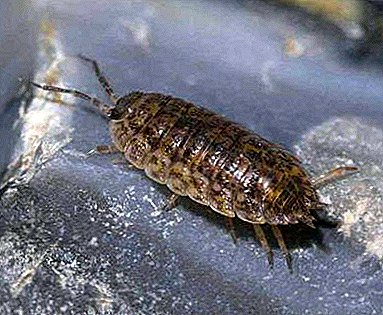 Among the usually acidic fruit of the cherry there are varieties that differ in fairly large and juicy fruits, without the usual strong acid. The Chernokorka cherry, which has been successfully grown on the territory of Ukraine and in some regions of Russia for more than a year, is one of those. In the description of this variety there are many interesting nuances, which we now will tell.
Among the usually acidic fruit of the cherry there are varieties that differ in fairly large and juicy fruits, without the usual strong acid. The Chernokorka cherry, which has been successfully grown on the territory of Ukraine and in some regions of Russia for more than a year, is one of those. In the description of this variety there are many interesting nuances, which we now will tell.
Inference history
"Chernokorka" is considered to be the product of the works of Ukrainian breeders who managed to get a fairly prolific tree with an average fruit ripening period. It has found wide distribution in the territory of our state since 1974 and today it grows in many Ukrainian regions: Dnipropetrovsk, Luhansk, Kirovograd, Zaporozhye, Odessa and other regions.
In addition, cherries of this variety are grown in several cities of the Russian Federation, mainly in the North Caucasus region.
Description and distinctive features of the variety
When describing fruit trees, it is important to consider not only the peculiarities of the fruit, but also the characteristics of the plant itself, since the yield depends largely on them.
Did you know? On the territory of Russia, they began to cultivate cherries only in the middle of the XIV century, but it quickly gained popularity and came to the most remote regions of the country (due to the frost resistance of some wild varieties, they can be found even in the Himalayas).
Tree
Externally, the cherry "Chernokorka" is presented in the form of a highly branched tree, more like a large shrub, up to three meters high.  Her crown is half-open and from the side it seems a bit wilted. All such plants tolerate drought perfectly and do not need a lot of moisture.
Her crown is half-open and from the side it seems a bit wilted. All such plants tolerate drought perfectly and do not need a lot of moisture.
In addition, they also do well with the winter frosts. Fruiting usually occurs towards the end of June or the beginning of July, and only 5 years after planting.
Check out such varieties of cherries as Morozovka, Uralskaya Ruby, Turgenevka, Molodezhnaya, Vladimirskaya, Black Large, Shokoladnitsa, Kharitonovskaya.
Fruit
Maroon cherries have a mass of about 4.5 g and are characterized by the presence of thin and shiny skin. The same burgundy flesh is very juicy and sweetish in taste, thanks to which the fruit got a rather high appreciation of tasters - 4 points.
They are well suited for fresh consumption, and for all kinds of preservation in the form of compotes, jam or jams.
The separation from the fruits of cherries "Chernokorka" - wet, and a small bone is well separated from the soft part. A strong fruit stem holds the fruit, so it is worth making a little more effort to remove it.  On average, it is possible to harvest up to 30 kg of cherries from one tree every year, and under good conditions and favorable climatic conditions, the yield often reaches 60 kg per plant.
On average, it is possible to harvest up to 30 kg of cherries from one tree every year, and under good conditions and favorable climatic conditions, the yield often reaches 60 kg per plant.
Did you know? Cherry is able to deal with seizures of epilepsy, and before the advent of modern medicine, folk healers recommended that patients eat this particular berry, and in large quantities.
Pollinators
This variety belongs to the group of self-productive ones, which means that in order to get a rich and high-quality crop from Chernokorka cherries, it is necessary to plant suitable pollinating trees next to it.
Cherry varieties such as "Donchanka", "Annushka", "Aelita", "Don Beauty", "Early Pink" are best suited for this role, and the Lyubskaya variety should be mentioned among the good neighbors of cherries.
Selection of seedlings for planting
It is no secret that for planting a fruit tree on your plot, first of all, you need to buy a good sapling that will be able to bring a decent harvest in the future.  It remains to learn how to visually distinguish good planting material from an unsuitable young plant.
It remains to learn how to visually distinguish good planting material from an unsuitable young plant.
So, when choosing a cherry seedling "Chernokorki" you should pay attention to the following features of the presented option:
- it should be a plant about one meter in height, with a well-branched rhizome and several sprigs;
- all its parts must be elastic and have no signs of disease, either on the bark or on the leaf plates;
- in case of slight damage to the bark (simply clawing at it) in a healthy seedling you can notice moist greenish cells, but if they are dry and gray, then planting such an instance on your site will not exactly bring the desired result.
Important! Buy seedlings only from verified people or in specialized nurseries, and even if the cherry is sold with a closed root system, try to find a way to assess the condition of the roots: for example, you can negotiate with the seller and carefully unscrew part of the substrate.
Choosing a suitable place on the site
After selecting a good seedling, it also remains to choose the right place for its planting. In this question it is necessary to take into account two main criteria: light intensity and type of soil. 
Lighting
If you are going to grow cherries of the specified variety, you need to understand that for a bountiful harvest, it should receive a sufficient amount of sunlight, that is, it can be placed only in a well-lit area.
At the same time, the trees do not cope well with severe frosts, so it would be better to “hide” them behind any building in an area that is able to protect the “Black Forest” from cold winds. The most suitable place, taking into account all the requirements put forward, is considered the northern part of the territory, well lit by sunlight.
In addition, make sure that trees do not grow within a radius of 4-5 meters, as representatives of this variety do not tolerate such a close neighborhood, and above them are not placed vines that can shade the cherry. 
Priming
Cherry "Chernokorka" also makes its demands on the composition of the soil at the site you have chosen for planting. In this case, preference should be given to loamy substrates, where groundwater does not come too close to the surface.
It is also important that the reaction of the soil be neutral, at a level of 6.5-7.0 pH, although in almost all cases it will have to be additionally fertilized and often lime.
You will be interested to learn about how to harvest cherries, about the rules of pruning, about the beneficial properties for the human body.
Preparatory work
The planting of the described plant in the ground is carried out immediately, as soon as the earth warms up sufficiently under the sun's rays, but preparatory measures begin in advance.
In particular, the planting pit is prepared about a month before the intended placement of the seedling, choosing its dimensions according to the volume of the root system.  In order for the “Chernokorki” seedling to “settle down” more quickly in a new place, organic fertilizers (for example, horse manure) are put on the bottom of the planting hole, adding to them superphosphate and potassium chloride, taken in equal proportions.
In order for the “Chernokorki” seedling to “settle down” more quickly in a new place, organic fertilizers (for example, horse manure) are put on the bottom of the planting hole, adding to them superphosphate and potassium chloride, taken in equal proportions.
Important! In most cases, the optimal size of the hole will be 70-80 cm wide and 50-60 cm deep.Before planting the plant directly into the ground, it must be carefully examined (especially if you bought a seedling in advance) and pruned all branches that were not correctly growing or frozen after wintering. Sapling root is usually cut to 1/3 of its length.
Step-by-Step Instruction Landing
You can plant cherries on your plot both in spring and in autumn, but, as practice shows, for Chernokorki the first option is more suitable.
During the autumn planting, there is a rather high probability of death of the plant as a result of unexpected frosts. 
The technology of planting seedlings is as follows:
- a seedling is placed in the prepared planting pit with mound poured in with soil (it mixes in advance with fertilizers), gently dredging it and leaving the root neck 5 cm above the pit level;
- a peg is driven into the center of the pit (it can be done immediately) and a seedling is tied to it, giving it better stability;
- cover the hole with the rest of the earth and tamp the substrate around the young tree a little;
- water the plant and, if necessary, mulch the tree trunk with sawdust or peat;
- An earthen roller is poured in the radius of the trunk, which will prevent excessive divergence of water during irrigation.
Important! Saplings on vigorous rootstocks for a comfortable existence requires a food area of at least 12 m², while plants with medium-sized rootstocks may be limited to an area of 9 m².
Seasonal care features
Like other varieties of cherries, Chernokorka is in dire need of timely watering, loosening, pruning and other major agricultural activities that will contribute to its proper and harmonious growth. Consider the features of each of these processes. 
Watering, loosening
At the first time after planting the seedlings at a new place, watering should be done on a regular basis and using a sufficient amount of liquid.
In the future (approximately in a few months), as soon as the tree becomes stronger, one bucket of water 1-4 times per month will be enough. Closer to autumn, the amount of watering is reduced, and in early September they must be completely stopped.
Cherry "Chernokorka" responds well to timely loosening and proper maintenance of the tree trunk, which means that it is necessary to regularly remove all weeds from it and carefully dig it, you can not shovel at full bayonet. 
Top dressing
Each year, before the flowering of the cherry, it is necessary to feed it with mineral fertilizers, presented in the form of an aqueous solution of urea, superphosphate and potassium chloride.
In addition, almost any soil must be further calcified by adding ground limestone or dolomite flour, the amount of which depends on the type of substrate.
After flowering, the plant can also use organic matter as fertilizer: manure, compost, or special chemical compounds that are easy to find in almost any specialized store.
These fertilizers are usually applied for digging, or they dissolve and pour soil on them in pristvolny circles.
When autumn feeding cherries (after removing the fruit), you can use any ready-made nutrient mixture, but only without nitrogen. Potassium and phosphorus should act as obligatory components of top dressings. 
Preventive treatment
Much to the chagrin of many gardeners, Chernokork cherries do not have good resistance to the effects of insect pests and pathogens, which most often cause the development of such a disease as coccomycosis.
The first signs of the presence of the disease appear in early summer, and during the growing season it can produce about eight generations. The main symptoms of coccomycosis on the chernokorka cherry are small brown specks on the upper part of the leaf and pink-white pads on the bottom.
In the second part of July, an adult plant can lose up to half of its leaves, while young seedlings remain completely bare.
The main methods of combating this disease include the timely collection of flown foliage and its complete destruction, followed by spraying the cherry with antifungal fungicidal preparations after the end of the flowering period and after picking the fruit.  A special suspension, which you can prepare yourself at home, is also a good prophylactic agent.
A special suspension, which you can prepare yourself at home, is also a good prophylactic agent.
All you need is to dilute 100 g of colloidal sulfur and lime (50 g of each substance) in 10 liters of water and, after filtering the solution, treat the trees several times per season.
For a person, such a self-made drug is absolutely safe, but if there are already fruits on the tree, and you have not noticed any signs of illness, it is better to postpone the treatment.
No other preventive measures for the care of "Chernokorka" are not provided - it is enough to comply with the basic agrotechnical requirements. 
Pruning
In the first year after planting a cherry of the described variety in your area, you will need to remove at least 80% of the flowers formed on it, which will enhance the nutrition of the plant and allow it to direct all its strength to further growth.
Any formed root growth can also be removed, since this can reduce the flow of nutrients, thereby increasing future yield.
Do not ignore the requirement for annual thinning of the crown (performed in early spring before the start of sap flow) with the obligatory removal of all weak and twisted shoots.
Important! The maximum number of cutting branches should not exceed ¼ of their total number. Cut only those shoots that are really superfluous, otherwise the cherry will not tolerate such an intervention.Quite healthy branches with fruits growing downward are subject to removal, and if the tree has already reached a height of three meters, then its further growth can be limited by cutting the central conductor and branches growing upwards. In this case, the cut must be performed "on the ring."

Preparing for the winter
Cherry "Chernokorka" has a fairly high level of resistance to frost, which, however, is typical for other varieties. However, if the winter will stand out with little snow, then it is likely that escaping damage to the shoots simply will not succeed.
That is why at the end of autumn it is necessary to protect the roots as much as possible by mulching the soil with horse humus or sawdust in the tree trunks. The trunk itself is wrapped with protective material. If the snow still falls in winter, then you can additionally use it for shelter.
Cherry "Chernokorka" is an excellent option for many gardens: it does not differ in excessive capriciousness, it allows to get quite abundant crops and at the same time relatively sweet. A little effort, and soon ripe and juicy cherries will appear on your table.


